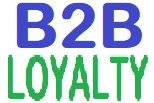Regardless of your customer type (whether consumers or businesses), it is always more costly in finances, time and other resources to acquire new customers than to just continue selling to your current customers. In fact, the investment in the customer acquisition process is greater for B2B for several reasons. For instance, B2B relationships involve orders with higher values and as a consequence, the decision-making process often involves more of your business customer's team members to analyze your offer as their order value increases. This challenge and value of each acquisition is even greater because fewer B2B customers exist.
Provide a professional onboarding experience
Onboarding involves the collection of experiences that your customer has when they are new, usually after the first sale. The process is introductory in nature and usually involves giving new customers a tour of what you offer. Among other things, they may include your GT&Cs, FAQs, product pages, contact details of a dedicated representative and onboarding buddy, introduction to live chat and other means of being in contact, invitation to the loyalty rewards program and so on.
Prepare to Offer a Superior B2B Customer Experience (CX)
Just imagine how, if you are upstream within your B2B customer's supply chain, your efficiency, trustworthiness, reliability and so on can literally make or break their reputation and, in turn, commercial wellbeing. I previously created a list of Customer Relationship Management (CRM) practices to improve the wholesale B2B customer experience. While these practices do not require the active involvement of B2B customers in an official program, they essentially contribute to loyalty and should definitely be included in your practices regardless.
DO's
- Understand your B2B customer's buying process and figure how best to improve their sales velocity.
- See list of Customer Relationship Management (CRM) practices
- Explain the benefits of your practices. Be sure they understand. For instance, explain the value of polices like having a MAP price. See reasons for many CRM practices for wholesale customers.
- Engage in data mining to understand, anticipate and proactively respond to B2B customer needs.
Self-Help Center that Answers Questions
Design the program in a way that is attractive to B2B customers and your brands. Clearly, gamification and rewards points are unlikely to impress most B2B customers (as they do B2C consumers).
Examples
- B2B customers can earn rewards via the following. Do NOT be shy about what you want B2B customers to do. Give clear, unambiguous Calls to Action (CTA) and explain how your customers are due to gain in return.
- reviews
- referrals
- answering questions in product support forums
- If customers pay 100% cash within x days, they get y% off, add-ons.
- Other B2B benefits involve exclusivity marketing like
- early access to new product features
- market research that is only available to existing customers
- opportunities to be involved in beta testing, or more personalized support.
- inclusion as an 'additional insured' on your business' certificate of product liability insurance policy for only authorized retailers.
CONTENT RELATED TO VISIT-BASED AND SPEND-BASED LOYALTY REWARDS PROGRAM
- All things B2B
- The B2B buying process
- As consumers change, so too should loyalty rewards programs in order to be successful. Here's how.
- How using tiered loyalty rewards programs can be a game changer.
- What's the point of having a great loyalty rewards program if no one can understand it? Let's talk how to create a loyalty rewards program explainer page.
- The case of Starbucks' change from a visit-based to spend-based rewards program. In the new spend-based system, customers needed to spend $1 to earn 2 stars and could redeem star points for a free item when they had accumulated 125 stars. Previously, customers received a free item after 12 visits (regardless of the items bought during the 12 visits and without restriction which drink they could select as the reward). In the old visit-based system, lower value customers were earning roughly 4 times more than higher value customers. However, Ultimately, after the new spend-based system, higher value customers earned roughly 50% more than before, lower value customers lost over 60% and Starbucks saved considerably.
- The calculations involved in your point system can easily become hard to understand for the average customers. See how to introduce your program in an attractive and digestible way with explainer pages.
- Measure the success of your loyalty rewards program.
- Incorporate a referral program into your loyalty rewards program. These 2 types of program complement each other. While the loyalty rewards program seeks to retain customers, referral programs seek to acquire new customers.
- Analyze how well your rewards catalog has been curated.
- Gift card programs may be designed to be stand alone or an integrated component of your current referral and or loyalty rewards programs.

No comments:
Post a Comment
Note: Only a member of this blog may post a comment.